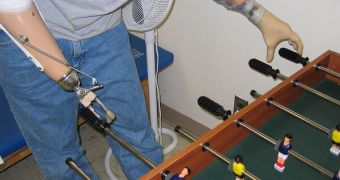Over the years, it has become fairly obvious that people who had their arms and/or legs amputated can still sense their limbs, as if they were still attached to their bodies. It has also become clear that people cannot only do that, but they can also imagine that they are moving their missing arms or legs in manners that are impossible when they are actually attached to the body. Over time, and with a lot of practice, it may become possible for amputees to form an entirely different perception of their bodies, which, in their minds, grow to have completely unnatural shapes, NewScientist reports.
In an awkward set of experiments, scientists asked amputee volunteers to look at a set of images, in which a hand was depicted in an awkward position. The participants were asked if the hand shown was the left or the right. Therefore, they needed to imagine that they were moving their own hands. In a second test, a pair of photos showed a hand in two different positions, and the participants were asked to imagine moving their own missing hands, from one position to the other.
University of New South Wales expert Lorimer Moseley, and Swiss researcher Peter Brugger, from the University Hospital Zurich, have been in charge of the experiments. The scientists timed the responses that the participants had, and determined that it was a lot easier for the subjects to accomplish the demands of the tasks by simply performing anatomically impossible actions, such as passing their hands through the wrist. The participants were also noticed to bend their arms in impossible ways.
“The brain truly does change itself,” the two researchers say. “The idea that just thinking about movements can change body image is quite surprising,” Karolinska Institute neuroscientist Henrik Ehrsson, from Stockholm, in Sweden, adds. In the same studies, all the seven participants were asked to practice moving their missing limbs in impossible ways. After some time, four out of seven test subjects managed to do so constantly.
The scientists say that the amputees essentially constructed a new image of their missing limb. This conclusion is also supported by the fact that the new, “impossible” movements seemed to get in the way of the normal ones that the body performed. One possible application for the new research would be devising a method of alleviating phantom pain that amputees feel in their missing limbs, the two researchers say.

 14 DAY TRIAL //
14 DAY TRIAL //